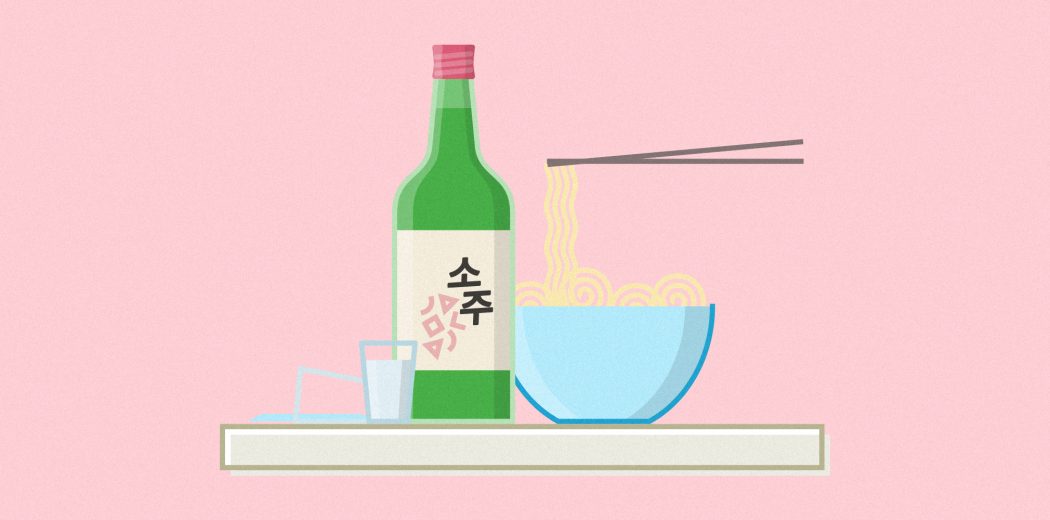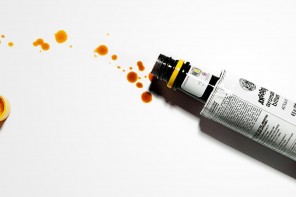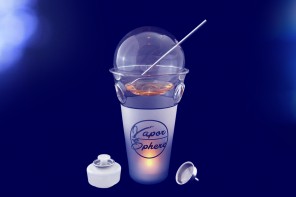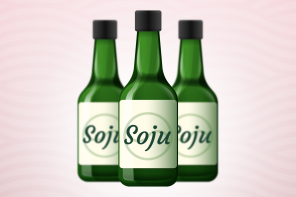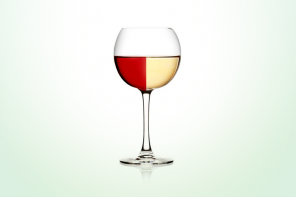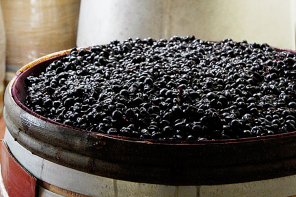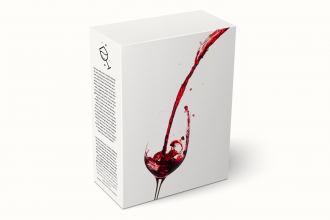Just in time for the Olympics, we decided to create a comprehensive guide regarding all things Korean alcohol. According to Wikipedia.com, there are more than 1,000 kinds of alcoholic beverages in South Korea, mostly made from rice fermented with yeast and flavored with fruits, flowers and herbs. These drinks fall into six categories: yakju, distilled liquors, takju, fruit wines, flower wines and medicinal wines.
Soju
Soju is super popular in South Korea. I encountered the stuff at a bar in the East Village that didn’t have a full liquor license, so they made cocktails out of soju instead of something more traditional, like vodka. Soju, which falls into the distilled liquor category, is a staple in Korean culture, so there’s a lot of etiquette that goes with drinking it. Sip it from a shot glass, never pour your own and bow your head if someone older than you hands you a glass.
Taedonggang
Considered one of the best beers in South Korea, this is a golden orange lager and is exported limitedly throughout Asia. Interestingly, the brewing company is owned by the North Korean government, but was exported to South Korea briefly about a decade ago. The beer itself is named after the Taedong River, where the water for the brew is sourced.
Yakju
This is a refined rice wine, made from both white and black rice. It’s boiled with yeast and water, and is commonly flavored with ginseng, pine sprout, chrysanthemum, azalea and lotus. Another Korean rice wine is Cheongju, similar to Japanese sake.
Takju
Also known as makgeolli, this milky, sweet drink is made from (surprise) rice. It’s technically a rice wine, but has a relatively low 6-7% ABV. It’s not filtered after fermentation, so it has a milky white color and thick, smooth consistency. It’s typically served in a bowl and has a sweet taste that’s slightly tangy.
Gwasilju
Gwasilju is a type of wine made from fruits, flowers and grains, which vary based on the season. In the fall, yuzu and wild grapes are popular; in the spring, peaches and pears are used. Plums, grapes, Korean black raspberry, Chinese quince, cherries and pomegranates are also typical fruity varieties of Korean wine.
Dugyeonju
This floral wine is made from azalea petals and made in Chungcheong Province. It’s sweet and light yellowish-brown in color and has a pretty high ABV of 21 percent.
Bek Se Ju
This commercial and traditionally medicinal wine is popular among younger people, who now drink it for recreational purposes. It’s a rice wine infused with ginseng, licorice, ginger, cinnamon and other herbs, and has a moderate 13 percent alcohol. It’s usually drunk as an alternative to soju – it does sound a bit more palatable to me.

